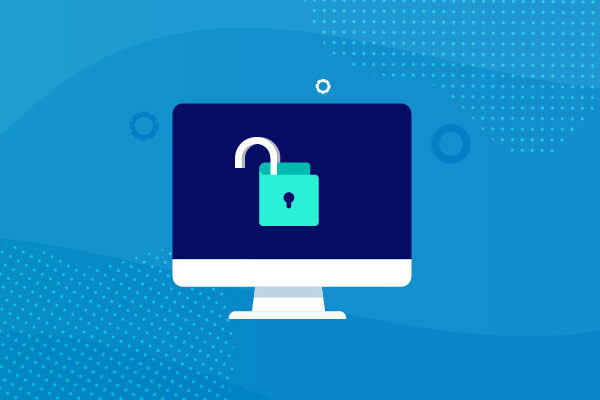What Is Endpoint Detection and Response (EDR)?
As a managed service provider (MSP) you are probably concerned with the risk of cybersecurity attacks, especially if you have remote workers. To malicious cybercriminals, those endpoints create gateways into business networks.
As these threats continue to evolve and more cybercriminals leverage vulnerabilities in endpoints, it is essential to find the right solutions to combat these potential attacks. This is where endpoint detection and response solution systems come into play.
What is endpoint detection and response?
Endpoint detection and response is a layered, integrated endpoint security solution that monitors end-user devices continuously in addition to collecting endpoint data with a rule-based automated response. At Gartner, Anton Chuvakin suggested this term as a way to describe emerging security systems that have the capabilities to detect and investigate suspicious activities on endpoints and hosts. Deploying these types of security systems with high degrees of automation can help your security team quickly identify and respond to malware and ransomware threats.
How endpoint detection works
Endpoint detection and response works by monitoring a network and endpoint events while recording that information in a centralized database. While in the database, your EDR system will continue to analyze, detect, investigate, report, and alert your security team of any potential threats. You will need to download a software agent on the host system, which will provide the foundation for event monitoring and reporting.
It is important to note that not all EDR tools work the same way or offer your business the same spectrum of abilities. Some EDR tools perform more analysis, whereas others focus more on the backend via a management system.
Some systems will vary in how fast they collect data and deal with those threats. Overall, all endpoint detection and response solutions have the same purpose: to provide your company with continuous monitoring and analysis to proactively identify, then quickly respond to, threats.
The importance of endpoint detection and response
Having a robust endpoint security system is imperative as remote work becomes more common. When you deploy an effective endpoint threat detection solution, you can protect your remote workers and your business from a greater number of cyber threats.
Endpoint detection is a layered approach that goes beyond reactive detection-based cyber defense. Instead, it provides your security analyst team with the tools they need to be proactive in identifying threats to protect end users.
Endpoint threat detection provides your business with several different features that will improve your ability to manage risks and threats. The benefits of EDR include improved visibility, rapid investigations, remediation automation, and more.
Improved visibility
EDR security solutions continuously collect and analyze data and report that information to a single centralized system. This will provide your IT security team with complete visibility into the state of the environment’s endpoints.
Rapid investigations
Endpoint detection and response solutions are specifically designed to automate data collection and processing. They are also designed to process certain response activities.
These rapid investigations make it easier for your security team to gain context regarding a potential security incident. With this information on hand, you can quickly take the necessary steps to remediate the threat.
Remediation automation
In some cases, it may make sense for your EDR to automatically perform specific incident responses based on your predetermined rules. This allows your security system to remediate or block particular incidents rapidly. This helps take the load off of your security team, allowing them to focus on more significant threats that require their attention.
Contextual threat hunting
This defender for endpoint solution continues to collect and analyze data, providing the managed service providers (MSPs) with deep visibility into an endpoint’s status. This process allows threat hunters to identify and examine potential signs of existing infections.
The importance of endpoint detection and response
Endpoint detection and response solutions should be able to provide your company with the support your organization needs to secure your environment from cyber threats at the endpoint. In order for your security analyst to be equipped to stop these threats, your endpoint detection and response system should have incident triage flow and threat hunting.
Incident triage flow
Your endpoint security tool(s) should be able to automatically triage potentially malicious or suspicious events, allowing your security team to prioritize which threat to investigate. This can help to prevent alert fatigue, a phenomenon that often occurs when analysts are responsible for investigating every alert.
Threat hunting
Not all security threats or incidents are detected or blocked by an organization’s security system. To make sure that all possible threats are at least analyzed and dealt with, your endpoint detection and response system should provide your security team with support for threat hunting activities. This will help your analysts proactively search for potential intrusions.
Data aggregation and enrichment
When differentiating between false positives and true threats, context is vital. Your EDR system should use as much data as possible to make the right decision about potential threats. Once the threat is appropriately identified, a security analyst should be able to remediate the true threat rapidly.
Protect your clients businesses from harm
Endpoint security is always an essential part of any organization’s cybersecurity strategy. Although network-based defenses are great at blocking a large percentage of cyberattacks, some of these attacks are sure to slip through the cracks, bypassing these defenses and causing significant consequences for your business.
When you deploy an endpoint detection and response solution, you enable your organization to implement an in-depth defense system that quickly and accurately detects and responds to these threats.



